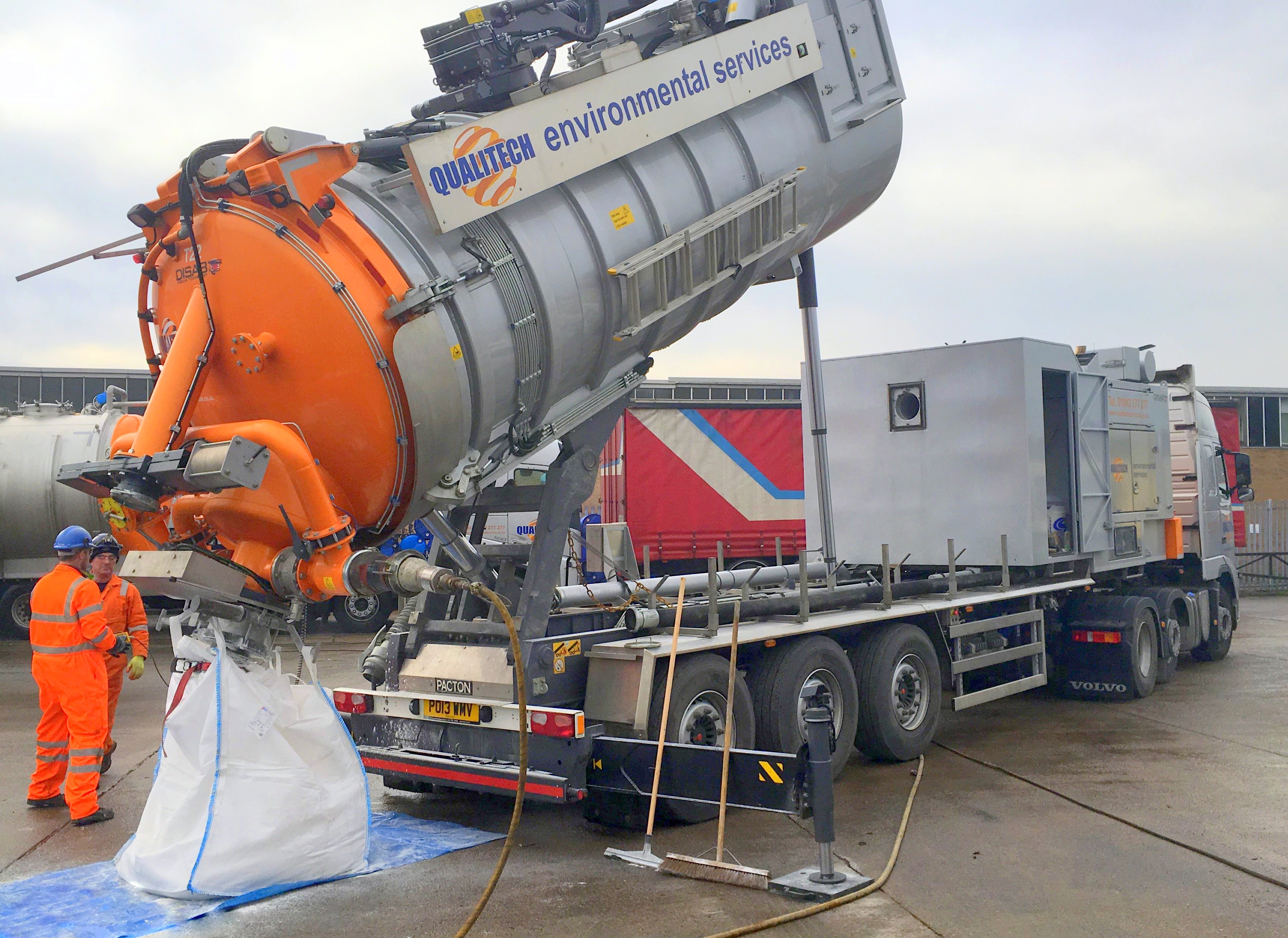
Posted on Feb 24, 2020

We reckon Qualitech has the smartest tanker fleet on the UK’s roads … and there’s lots of high technology that goes into our lorries too.
We reckon Qualitech has the smartest tanker fleet on the UK’s roads … and there’s lots of high technology that goes into our lorries too.
The Qualitech fleet is a striking sight in its orange and silver livery and we pride ourselves on the pristine condition we keep all our vehicles even though they have to deal with some highly toxic and corrosive loads along with dirty jobs such as shifting dewatered sludge.
Qualitech is a nationally-renowned name for its comprehensive industrial tank cleaning services (https://www.qualitechservices.co.uk/services/tank-cleaning) and here we reveal the science that goes into the potentially dangerous loads our tankers carry on the nation’s roads?
If tankers were all made just of steel then acid would simply burn through them and spill out. To prevent this they are coated in substances ranging from rubber to glass. The rubber is ideal for acid loads while the glass is designed for corrosive materials. Amazingly, glass-lined tankers have been around for more than 300 years as glass is extremely resistant to corrosion to most acids.
Our fleet
Qualitech has a 30-strong fleet of more than 20 tankers – each with a 30,000-litre capacity – to transport liquid waste and just about any job that needs a road tanker. The Qualitech tanker barrels are built from stainless steel and are coated in a range of materials, especially glass and hyperlon rubber for transporting acids and other highly corrosive substances. The stainless steel barrels are for less corrosive liquids. We use mild steel and aluminium barrels for non-hazardous liquids and solvents.
We have smaller, 15,000-litre rigid tankers for sites with restricted access, complete with onboard jetters.
The fleet includes DISAB articulated units for dry waste, heavy sludge and solids which can take on loads at 8,500 cubic feet per minutes (cfm). We are experts at construction dewatering, sludge dewatering, sludge removal and lagoon sludge removal(https://www.qualitechservices.co.uk/services/de-watering).
Our lorries can carry up to 12 tonnes and load everything from heavy solids to fine powders with all the dust collected in specialist dust traps. Their suction power is both immense and unique as the substance is sucked up in hoses ranging from 6 inches to 12 inches. Normally this waste could only be shifted by an excavator so this really saves on costs, including time and manpower.
We’ve shifted waste from the most inaccessible locations such as tanks, interceptors or even coal shafts. When it comes to getting the substance out of the tanker our newest DISAB has a high tip barrel which means the tank can tip right into containers.
Using our vacuum loading hoppers, the tanker loads can be transferred directly to pallet-mounted intermediate bulk containers which are used for storing and transporting bulk liquids and powders. We also use normal drums and one tonne bags approved by the United Nations. All these are ideal for heavy solids. The hopper is fitted with a vibrating discharge and aeration system to ease the discharge into containers for disposal.
Our new liquid ring tipping tanker even has an onboard jetter with a 21-litre capacity for heavy sludges. The liquid ring pump is extremely powerful and bridges the gap between a conventional vacuum tanker and a DISAB unit.
How are rubber and glass linings made for tankers?
It’s a technical process to apply both rubber and glass linings.
With rubber, the steel needs to be prepared before being primed with a rubber glue followed by a second rubber glue coating before the uncured 4-6mm thick rubber is applied in wide sheets and pressed on with hand rollers. Finally, it is vulcanised – that simply means hardened - by heating it with steam or hot water for up to 30 hours.
Making glass-lined tankers is an even lengthier and more technical process that involves glass flake which are exceptionally thin sheets of glass suspended in a chemical resistant resin applied using high volume, low pressure spray equipment.
Glass also has good anti-stick qualities. Many substances will not stick to glass, but will stick to metal so glass-lined tankers are relatively quick and easy to clean and sterilise. Our tank cleaning services include both man-entry using personal protective equipment or no-man entry.
If you want to know more about our tanker services then please contact us on 01942 277 277 (Northern) or 01633 252642 (Southern) or email sales@qualitechservices.co.uk
